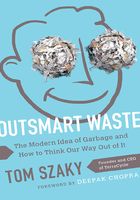
What Currently Happens to Our Waste?
Our waste is a monumental problem. Over the past 100 years, the amount of waste that humanity produces has increased by almost 10,000 percent. Developed countries produce more than 4 pounds of waste per person per day. Of that staggering volume, it is estimated that 25 percent ends up in our oceans, forming five gigantic, Texas-sized ocean gyres of garbage.
Of that staggering volume, it is estimated that 25 percent ends up in our oceans, forming five gigantic, Texas-sized ocean gyres of garbage. Because of the complexity of much of our garbage, only a small percentage gets recycled.
Because of the complexity of much of our garbage, only a small percentage gets recycled.
The majority of the waste that isn’t recycled and doesn’t wind up in the ocean is effectively mummified and compressed in landfills, leaching out methane and other toxic outputs over time. If it is not buried, it is typically burned in incinerators. While a very small percentage of incinerators do produce some energy as an output, in the process they also destroy all possible value except the caloric (or energy) value inherent in the materials. You can burn something only once.
While the global garbage crisis touches every individual in the world and grows every year, there is cause for optimism. Garbage is a rare example of an environmental problem over which, as individuals, we have tremendous control. The key question is: why do we spend huge amounts of resources—energy, money, and time—to extract oil from the ground and refine it into high-grade plastics, only to burn or bury it after one short use?
Unfortunately, and unlike nature, we often view our waste as something without any inherent value. Fortunately, it doesn’t have to be this way.